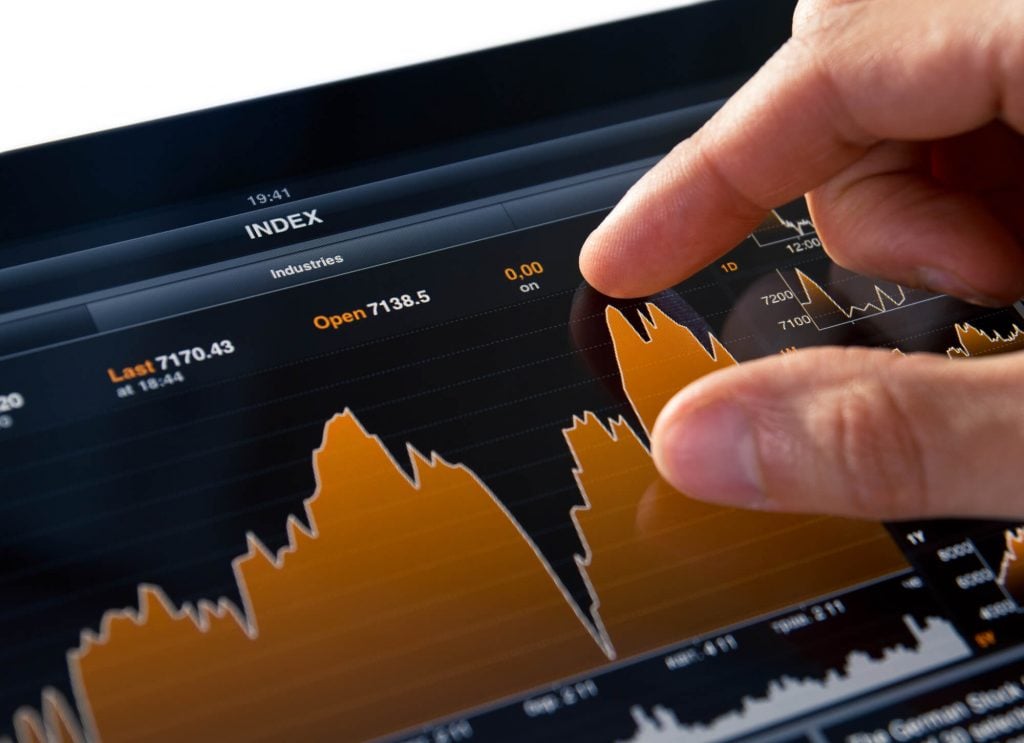
The key to stock market investing is knowing the right time to enter into a position — when the price is right. However, it can be hard to know how to find value stocks that are currently affordable but poised for growth.
Some stocks may be low-priced because their outlook isn’t so good. But others may be trading at prices below what they’re actually worth. We identify these stocks as, at the moment, “undervalued.”
In this guide, we’ll give you some tips and tricks on how to know if a stock is undervalued and whether it may be time to jump in.

Finding Undervalued Stocks: What Does “Undervalued Stock” Mean?
Stock market movement is driven by investor perception. A company’s share price can move up or down based on speculation, unforeseen events, or even a TV analyst’s recommendation.
But all that price movement doesn’t necessarily have anything to do with a company’s intrinsic value — the objective worth of a given asset or company, separate from all the external factors that influence its share price.
An “undervalued” stock is a security that, for whatever reason, is currently trading at a price that many investment professionals consider to be far below what the company is truly worth.
Sometimes, a historically profitable company will see its share price drop. This doesn’t necessarily mean the company’s going out of business. If there’s no reason to think it will, the share price may be designated as “undervalued.”
Alternatively, a small market cap may be stuck at a low price because its future potential is being grossly underestimated.
Investors buy undervalued shares believing that the price will eventually rebound and they’ll earn a profit from it. This is the classic “buy low, sell high” model of stock trading.
You don’t have to be a superstar investor to learn how to identify undervalued stocks. A great deal of the work you need to do involves one common online tool.
Using a Stock Screener to Find Undervalued Stocks
Every reputable online brokerage has a stock screener somewhere on its website. So do major online stock resources like Yahoo! Finance. You can also find dedicated stock screeners like Finviz.
A stock screener is a powerful tool that filters stocks according to certain criteria that you select. It lists all publicly traded commodities along with current share prices, market cap, trading volume, price-to-earnings ratio — every single indicator that’s important for stock analysis.
It’s smart to use these tools as undervalued stock screeners. With the right stock screening criteria for value investing, you can find buying opportunities you wouldn’t have otherwise.
If you have an online brokerage account like Fidelity or Schwab, we highly recommend using their proprietary stock screeners. They update as often as share prices change and are easy to incorporate with your online portfolio.
With the stock screener in hand — in a virtual sense — let’s look into how to determine if a stock is undervalued.

Indicators to Find Undervalued Stocks
When learning how to find undervalued stocks, there are a few common stock screener indicators that can reveal excellent entering opportunities, either by themselves or combined with simple calculations on your end.
Price-to-Earnings Ratio
The price-to-earnings ratio (P/E) is a calculation that gives an estimate of the share price value in relation to generated revenue. To get it, divide the current share price by its earnings per share. You usually won’t have to calculate it yourself; the stock screener will show the P/E.
For example, if a share is currently priced at $45 and its earnings per share are $3, the P/E calculation is:
$45 ÷ $3 = 15
This says that shares of the company in question are trading at 15 times the company’s earnings. Traders are essentially spending $15 to earn $3. A P/E ratio of 15 is about the average for the S&P 500.
Stocks with low P/E ratios are trading at prices that are lower in relation to company profits, making them seem like bargains to pick up at once. There’s a better chance to earn profits in the future when the stock is underpriced compared to its earnings.
However, there may be very good reasons for a low P/E ratio. The company may have something going on behind the scenes that makes the investment community nervous. So while the P/E ratio is a great metric to start with, it needs to be viewed in light of other data.
Price-to-Earnings Growth Ratio
The price-to-earnings growth ratio (PEG) incorporates the P/E and is generally regarded as a more reliable indicator for undervalued stocks. It considers a company’s earnings growth rate to show how past and/or future performance may play into the stock’s current value. It’s slightly more complicated than computing the P/E ratio.
The earnings growth rate is found simply by comparing two consecutive periods of growth and expressing it as a percentage.
For example, if a company’s earnings per share (EPS) last year was $1.25 and its EPS the year before that was $1.10, that’s an increase of $0.15. After doing the math, you’ll come up with an earnings growth rate of about 13.6%.
Now, we get to the PEG ratio. Say this company’s current stock price is $13.75, making its P/E ratio 11. To get the PEG figure, divide that P/E ratio by the earnings growth rate:
20 ÷ 13.6 = 0.8088
A PEG ratio less than one could be an indicator that investors are more stuck in the past — they’re undervaluing the stock’s potential for future growth, even though things seem to be going well.
You can also figure out the PEG ratio by computing expected future growth rates instead of hard past data. But if you come across enough information to arrive at that future growth rate, keep in mind that it’s a speculative projection.
Price Performance over Time Compared to Peers
If a stock is trading at prices lower than the company’s closest competition, take a look at both (or multiple) companies’ share price history over a given time. Look at several different time frames.
If both price histories are relatively the same until now, then this price devaluation may only be a bump (or rather a pothole) in the road. This can happen when analysts pile on a stock for whatever reason, resulting in an investor sell-off that pushes the price down.
By all means, listen to what the analysts are saying but consider that the situation may be far less dire than investors are making it. The stock may be undervalued.
Dividend Yields
Your stock screen should have a column showing each securities’ dividend yield percentage (DYP). Find your stock’s DYP and compare it with its competitors.
If you find your stock’s DYP is bigger than its peers, it could be undervalued. If there’s no reason to believe future dividends are in jeopardy or that the company’s in real trouble, it could be a good opportunity to jump in.
Market-to-Book Ratio and Cash Flow
At the end of the day, share prices are creatures of speculation. They don’t often take the real value of a company’s assets into account: real estate it might own, intellectual property it might have, or free cash flow it may experience.
The market-to-book ratio is another calculation taking those assets into account. It’s a simple computation of a company’s current market cap divided by its net book value (total assets minus total liabilities). You can find this using your stock screener and company financial reports. A market-to-book ratio of less than one may indicate an undervalued stock.
Also, check out the company’s cash-to-share ratio. Many investors feel it’s more important to know how free cash flow is rather than how much profit a company will report. A low cash-to-share ratio may be a sign of an undervalued stock and a potential growth opportunity.

Find True Value with Gorilla Trades
Gorilla Trades has helped our clients find undervalued stock opportunities that turn into real profits. To learn more, sign up for a free trial today.
